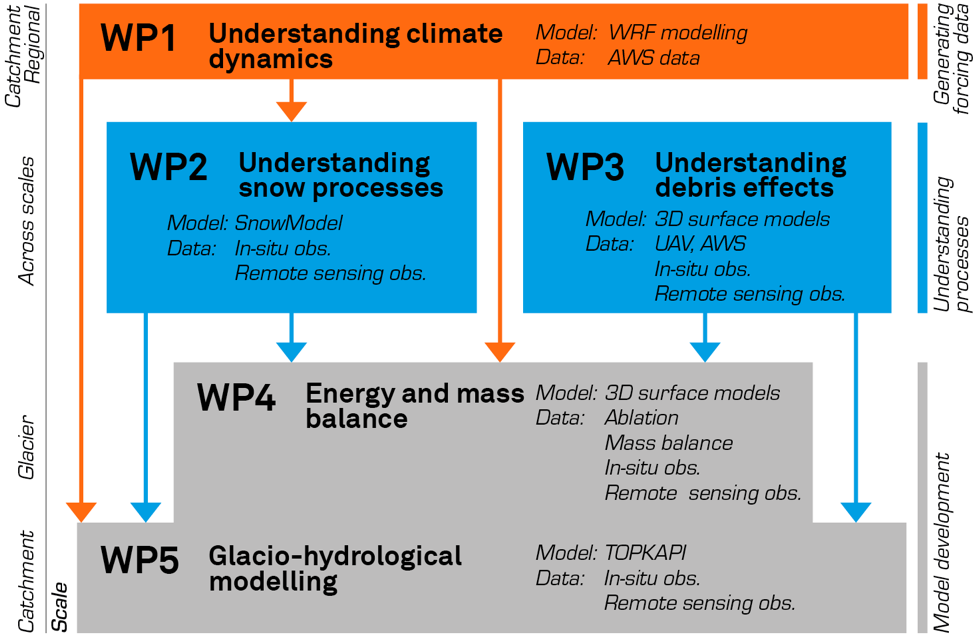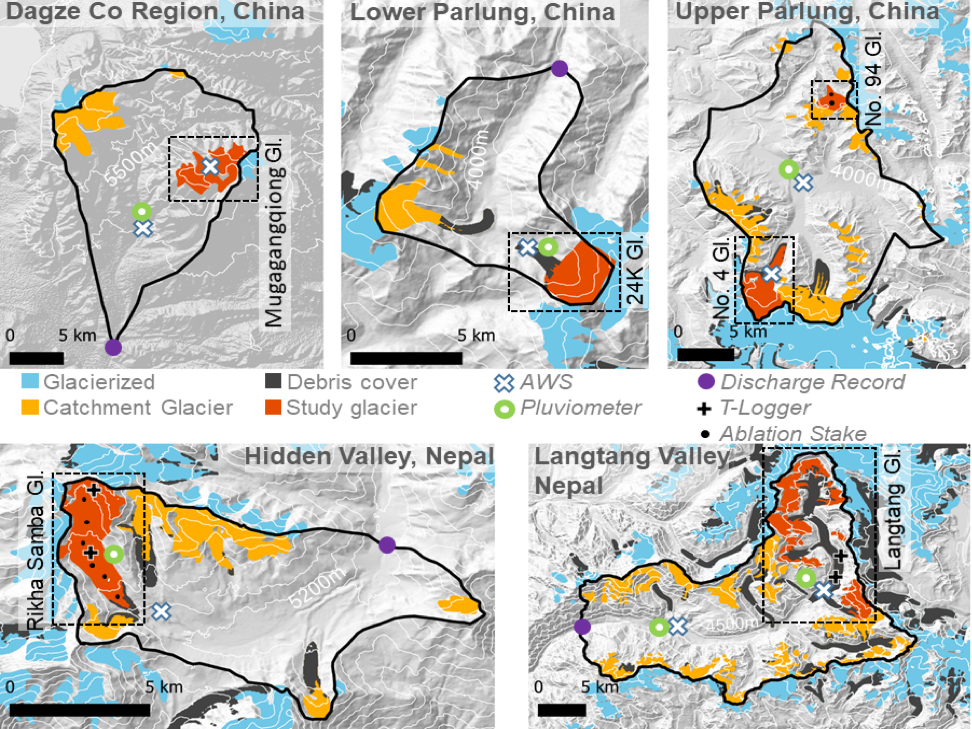Sino-Swiss Science and Technology Cooperation (SSSTC) Joint Research Projects proposal
Title: Understanding snow, glacier and rivers response to climate in the Himalayan and Tibetan Plateau
One of the most important questions of climate change impact research today is how glaciers are responding to global warming. High Mountain Asia (HMA) glaciers represent the largest mass of ice outside the Polar Regions and provide water resources for millions of people in the headwaters of the major Asian rivers. Nevertheless, their historical changes and future trends are unclear, due to a scarcity of direct observations and fundamental limitations in simulation models. This project will provide a step-change in our understanding of the response of HMA glaciers and runoff to a warming climate by solving some of the remaining unknowns in HMA glaciers and catchment response to climate: i) precipitation amounts at high elevation; ii) spatial variability of precipitation and snow; iii) debris-covered glaciers. We will incorporate knowledge of snow processes and debris-covered glaciers dynamics into a new model of glacier mass balance and high mountain hydrology. The new model will be informed by novel observations of glacier surface characteristics, glacier changes and hydrology and forced with high resolution climatic input generated by two new international efforts to run high resolution climate models over the entire HMA. The model will then be used to simulate glacier response and unravel the hydrological functioning of selected catchments across the wide variety of climates and glacier characteristics of HMA, bridging the scale gap between single point scale studies and very large simulations that rely on simplistic model assumptions. The project will provide a new physical basis for the distinct patterns of glacier changes in HMA that have been suggested recently but lack explanations. Recent studies have suggested the existence of broad patterns of distinct glacier mass losses and hydrological regimes. Most of them, however, have either been inferred from sparse observations or derived from remote sensing studies, which cannot shed light on the underlying mechanisms explaining those differences nor provide projections of future changes. Modelling efforts at large scale have advanced over previous simple approaches but still ignore or under-represent crucial processes, such as the role played by glacier debris cover, and major components of the HMA hydrological cycle, such as snow accumulation and melt. This project capitalises on large research efforts and joint ongoing projects by the Swiss and Chinese applicants, who have been collaborating with complementary expertise to study selected processes and glaciers in the region. In this new project, we have assembled a unique team of international partners that will provide datasets and expertise to make a timely and novel synthesis across HMA climatic gradients and scales and establish the scientific evidence of glacier and runoff changes beyond single case studies. The vast support by the international community and the additional datasets it will provide allow the model application beyond the single study sites that will be monitored by the applicants. We are truly pleased by the interest and support by this large network of international partners and the opportunity to combine ongoing research efforts to address a novel programme of synthesis of knowledge in HMA.

Figure 1. Flowchart showing the workflow of the project and interaction between work packages (WPs). The scale at which each WP operates is indicated to the left. The two WPs focusing on process generation are in blue, and the two WPs on new models development in grey. The two modelling WPs will inform one another, moving from the glacier (WP4) to the catchment scale (WP5).

Figure 2. The five study catchments, showing the glaciers (yellow), debris-covered area (dark grey) and the target glaciers selected for the monitoring (red) and where observations exist already from previous projects by the applicants and their partners. All instrumentation indicated exists already as part of the observational setting of previous and ongoing projects.



